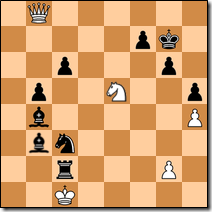The Politics of Economic Recovery
Editor’s Note: This is a guest post from isee’s training and consulting partner, Corey Peck of Lexidyne LLC. The mid-term elections are now a month behind us and the political airwaves are still abuzz with commentary about the results. Exit polls showed that unemployment was at the top of most voters’ list of issues, and that …
 Remember the example from part one of the child reaching for the hot stove? One possible outcome we can simulate is that the child does not get burned. We can simulate this outcome by altering our assumptions. We could include a parent in the room who rescues the child in the nick of time. Or, we could simulate the child slipping just before reaching the stovetop because the hardwood floor appears slippery. This kind of mental simulation allows us to evaluate what may happen, given different conditions, and inform our decision making. We don’t have to make any decisions while looking at the picture, but imagine what actions you might take if the scene above was actually unfolding in front of you.
Remember the example from part one of the child reaching for the hot stove? One possible outcome we can simulate is that the child does not get burned. We can simulate this outcome by altering our assumptions. We could include a parent in the room who rescues the child in the nick of time. Or, we could simulate the child slipping just before reaching the stovetop because the hardwood floor appears slippery. This kind of mental simulation allows us to evaluate what may happen, given different conditions, and inform our decision making. We don’t have to make any decisions while looking at the picture, but imagine what actions you might take if the scene above was actually unfolding in front of you.
 The most useful models are structured so that the model itself will provide an explanatory framework that enables someone to ask useful questions of it. Those questions may be answered by experimenting with the model (simulating) which, in turn, can help deepen a person’s understanding of the system.
The most useful models are structured so that the model itself will provide an explanatory framework that enables someone to ask useful questions of it. Those questions may be answered by experimenting with the model (simulating) which, in turn, can help deepen a person’s understanding of the system.